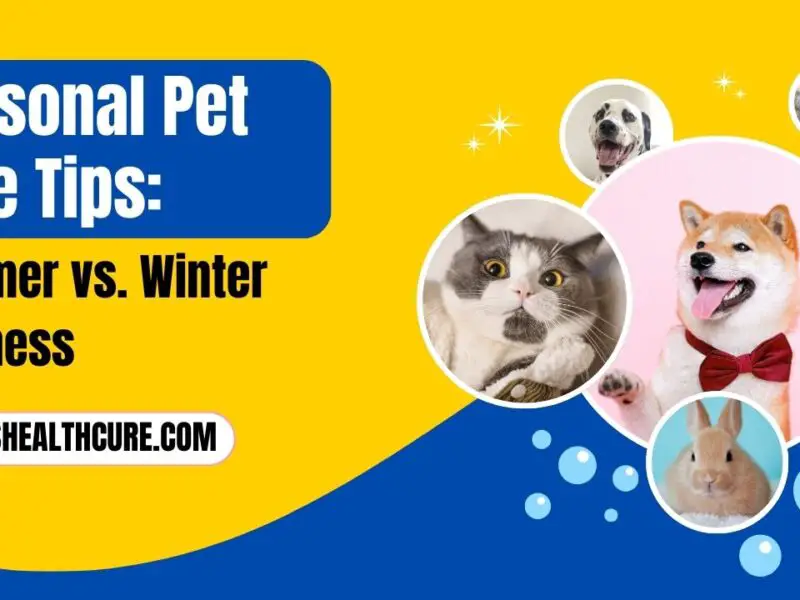Introduction
Pet grooming is not just about keeping your furry friend looking good—it’s a vital aspect of their overall health and well-being. Regular grooming enhances their comfort, prevents common skin and coat problems, and strengthens the bond you share with your pet. This article provides a complete guide to maintaining your pet’s hygiene, from brushing techniques to professional grooming services, ensuring their coat stays shiny and healthy.
Pet Hygiene 101: Grooming Tips for a Healthy Coat
Maintaining your pet’s hygiene is essential for their health and happiness. A clean and well-groomed pet not only looks great but also feels better. Regular grooming prevents skin issues, improves coat health, and fosters a stronger bond between you and your furry friend. Let’s dive into the ultimate guide to pet hygiene, ensuring your pet’s coat remains healthy and vibrant.
Understanding Your Pet’s Coat
Pets come with a variety of coat types, and each requires specific care:
- Short Coats: Easier to maintain but still need regular brushing to remove loose hair.
- Long Coats: Prone to tangles and matting, requiring more frequent brushing and detangling.
- Curly Coats: They need specialized tools to maintain their texture and prevent knots.
Pro Tip: Observe your pet’s coat for changes in texture or shedding, as this could indicate health issues.
Brushing Essentials
Brushing your pet’s coat is more than just aesthetics; it promotes circulation and removes debris.
- Tools: Use a slicker brush for long-haired pets, a bristle brush for short coats, and a deshedding tool for heavy shedders.
- Technique: Always brush in the direction of hair growth and be gentle around sensitive areas like the belly.
Frequency: Most pets benefit from brushing at least once a week, though daily brushing is ideal for long-haired breeds.
Bathing Your Pet
Bathing removes dirt and odors, but overbathing can strip natural oils. Follow these tips:
- Frequency: Bathe dogs every 4-6 weeks; cats rarely need baths unless dirty.
- Shampoo: Choose pet-specific shampoos free from harsh chemicals.
- Steps:
- Brush your pet before bathing to remove tangles.
- Use lukewarm water and gently massage shampoo into the coat.
- Rinse thoroughly and dry with a towel or pet-safe dryer.
Trimming and Shaving
Some pets require regular trimming to maintain their coat’s health and appearance:
- Trimming: Keeps hair out of eyes and prevents matting.
- Shaving: Only for specific breeds or medical reasons. Avoid shaving double-coated breeds as it disrupts their natural insulation.
Safety First: Always use sharp, pet-specific scissors or clippers and work slowly.
Nail Care
Overgrown nails can cause discomfort or injury. Here’s how to keep them in check:
- Tools: Invest in high-quality nail clippers or grinders.
- Technique: Trim a little at a time, avoiding the quick (pink area).
If you’re unsure, consult a veterinarian or groomer.
Ear Cleaning
Dirty ears can lead to infections. Regular cleaning ensures ear health:
- Signs of Dirty Ears: Redness, odor, or excessive scratching.
- Cleaning Steps: Use a pet-safe ear cleaner and cotton pads to gently wipe the outer ear. Avoid inserting anything into the ear canal.
Dental Hygiene
Oral health affects overall well-being. Follow these tips:
- Brushing: Use pet-safe toothpaste and a soft toothbrush.
- Alternatives: Dental chews, water additives, or toys designed for oral health.
Skin Health
Healthy skin is the foundation of a healthy coat:
- Common Issues: Dryness, redness, or flakiness.
- Prevention: Use moisturizing sprays or shampoos and maintain a balanced diet.
Managing Shedding
Shedding is natural, but excessive hair can be managed:
- Tools: Use a deshedding brush or glove.
- Routine: Brush your pet frequently and vacuum regularly to reduce loose hair.
Flea and Tick Prevention
Pests can wreak havoc on your pet’s coat and health. Stay vigilant:
- Detection: Look for signs like scratching or red bumps.
- Prevention: Use vet-recommended flea and tick treatments or natural repellents like essential oils (consult a vet first).
Seasonal Grooming
Adapting grooming routines to the season ensures your pet stays comfortable:
- Summer: More frequent baths to combat heat and dirt.
- Winter: Protect paws from ice and salt, and ensure proper drying after baths.
Diet and Its Impact
A nutritious diet contributes to a shiny coat:
- Essential Nutrients: Omega-3 fatty acids and biotin.
- Supplements: Consult a vet before adding supplements to your pet’s diet.
Professional Grooming Services
When in doubt, leave it to the pros:
- Benefits: Professional groomers handle tasks like nail trimming, ear cleaning, and styling efficiently.
- Frequency: Schedule professional grooming every 6-8 weeks for most breeds.
FAQs
- How often should I groom my pet? Weekly brushing and monthly baths work for most pets.
- Can I use human shampoo on my pet? No, as it can irritate their skin. Always use pet-specific shampoos.
- What should I do if my pet hates grooming? Gradually introduce grooming sessions with treats and positive reinforcement.
- Is professional grooming necessary? It depends on the breed and your comfort level with grooming tasks.
- How do I prevent matting in long-haired pets? Regular brushing and detangling are key.
- Are natural remedies safe for flea prevention? Some are, but consult your vet before use.
Conclusion
Grooming is an integral part of pet care, ensuring their coat stays healthy and vibrant. By following these tips, you’ll not only improve your pet’s appearance but also strengthen your bond with them. Happy grooming!


